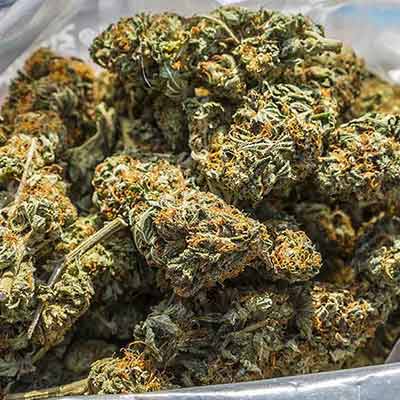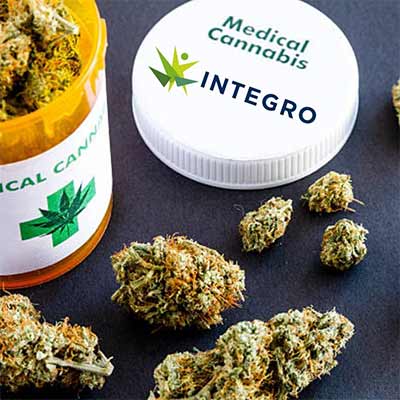Germany: Differences between medical cannabis patients and cannabis club members
The recent legalisation of cannabis in Germany has opened up a new range of possibilities for consumers, but this has raised questions about what the best way is to access marijuana legally and safely. With the option of either registering as a medical cannabis patient or joining a Cannabis Social Club (CSC), many users are faced with the dilemma of deciding which of these alternatives best suits their needs.
Germany has taken a historic step by legalising the use of cannabis for adults, thereby becoming one of the few countries in Europe to regulate the recreational use of marijuana. From 1st April 2024, the new Cannabis Act (Cannabisgesetz or CanG) allows adults to carry up to 25 grams of cannabis for personal consumption in public spaces; to be in possession of 50 grams of cannabis in their place of residence; and to grow up to three cannabis plants for their personal use. What’s more, since 1st July 2024, non-profit growing associations (known as Cannabis Social Clubs or CSCs), with a maximum of 500 members, are authorised to grow cannabis for distribution among themselves. This regulation has also influenced access to medical cannabis (which has been legal since 2017), making the requirements even easier for patients seeking alternative treatments for various health conditions. According to the new Medical Cannabis Act (Medizinal-Cannabisgesetz or MedCanG), cannabis products are no longer subject to the Narcotic Drugs Act (BtMG), so they now receive the same treatment as, for instance, a 600 mg ibuprofen tablet or the usual prescription drugs. These changes are intended to simplify the process for doctors and pharmacists, which in turn is expected to exponentially increase the number of medical cannabis patients. Therefore, this creates two forms of access to cannabis (in addition to personal cultivation), with particular advantages that must be evaluated according to the profile and needs of each user. As the requirements become more relaxed, many Germans are wondering which of the two options is best for accessing cannabis. Let’s now have a look at the differences between the two.
The purpose of use conditions access to cannabis in Germany
Medical cannabis in Germany is based on medical prescription, which means that a patient must obtain a prescription from an authorised doctor before they can purchase marijuana at a pharmacy. However, obtaining a prescription can be difficult, as it is necessary to demonstrate that cannabis is a reasonable medical option and that other treatments have been ineffective. But the process has now become relatively easy thanks to the proliferation of on-line telemedicine platforms which simplify this procedure (for instance, Dr Ansay, Bloomwell, or CannG). Users can get a medical prescription on these platforms just by answering a few questions, and then redeem the prescription directly at a partner pharmacy. This easy access has raised concerns about possible abuse of the system, so its continuity is currently in doubt, as it opens the door for people to obtain medical cannabis legally without a real therapeutic need. In contrast, joining a CSC doesn’t require a medical prescription, which makes access easier for people who don’t have a diagnosed condition, or who prefer to use cannabis for recreational purposes. Only those who have reached the age of 18 and have lived in Germany for at least 6 months may be admitted as members. Multiple memberships in several cannabis associations are not permitted.
The required amount of cannabis is linked to flexibility
Medical cannabis patients have greater flexibility in how much marijuana they can possess and carry, which may be essential for people who require more intensive use. According to the German Medical Cannabis Act (MedCanG), patients with a valid prescription are not subject to specific possession or transport limits, provided they can demonstrate that the cannabis is intended for their personal treatment. The maximum amount dispensed in pharmacies is usually determined by the doctor; and it tends to range between 30 and 100 grams per month, depending on the disease being treated. On the other hand, CSCs are subject to stricter limits, which may not be sufficient for users who consume large amounts. The quota is limited to 25 grams per day or 50 grams per month, with a monthly limit of 30 grams for teens between the ages of 18 and 21. In addition, CSCs can provide members with up to seven cannabis seeds or five cuttings per month, provided they have been created or grown within the community.
The types of cannabis products available make all the difference
In German pharmacies, medical cannabis products include dried flowers, oils, capsules, and standardised extracts. Doctors often prescribe marijuana varieties with a specific ratio of cannabinoids (such as THC and CBD), depending on the patient’s condition. Cannabis flowers are the most common, with THC concentrations ranging from 1% to more than 20%. Regarding the cannabis dispensed in CSCs, the legislation hasn’t set a maximum limit for its THC concentration. However, the THC content of marijuana should not exceed 10% for adolescents and young adults within the 18 - 21 age range.
The cost of cannabis products in Germany depends on coverage
In some cases, the cost of medical cannabis may be covered by health insurance either fully or partially, which significantly reduces patient expenditure. But, if the treatment is not covered, prices in pharmacies are generally higher than those of CSCs – between 20 and 25 euros per gram depending on the variety and product quality. Oils and extracts are usually more expensive, with prices that in some cases can exceed 100 euros per 10 ml of oil with a high THC concentration. The price of marijuana in cannabis social clubs also varies greatly according to the federal state and specific club, but they are generally significantly lower. While some clubs have prices of around 4 euros per gram for dried flowers, others may charge up to 10 euros per gram, depending on the strain. In addition to the cost of the cannabis itself, members must also pay membership fees, which can also vary considerably.
Legal implications are demonstrated behind the wheel
One of the most important aspects is traffic regulation. Medical cannabis patients have important advantages, as they can carry larger quantities and are also exempt from the limits on blood THC levels during controls, providing they can show that they’re using THC as a prescription drug for a specific condition. These benefits don’t apply to CSC members, who can be sanctioned if THC is detected in their blood whilst driving. The new Road Traffic Act (StVG), which came into force on 22nd August 2024, sets a legal limit of THC in the blood of 3.5 ng/ml (this had previously been set at 1 nanogram). It also prohibits the use of cannabis for novice drivers, and forbids the mixed consumption of cannabis and alcohol. For example, anyone caught driving with THC levels of 3.5 nanograms or higher, risks a €500 fine and a one-month driving ban. And, if you’ve also been drinking alcohol, then you will normally face a fine of 1,000 euros.
So what is the best option for purchasing cannabis in Germany?
The new German regulation provides several options for access to cannabis; and it is the user’s responsibility to assess which of these best suits their personal situation. The current trend shows that an increasing number of people are registering as cannabis patients, taking advantage of its easy access and legal advantages. However, CSCs represent a viable alternative for those seeking responsible and controlled consumption outside the medical field. Ultimately, the decision on which option to choose will depend on individual factors such as frequency of use, therapeutic needs, or willingness to face the potential legal drawbacks associated with recreational consumption.



